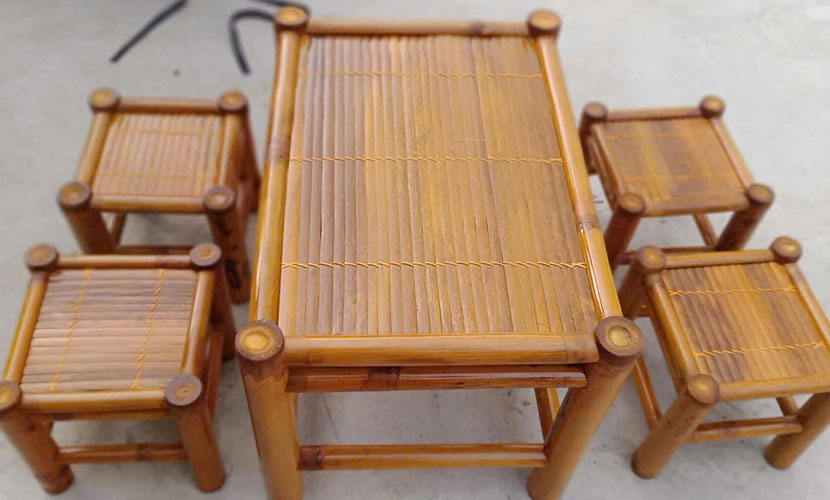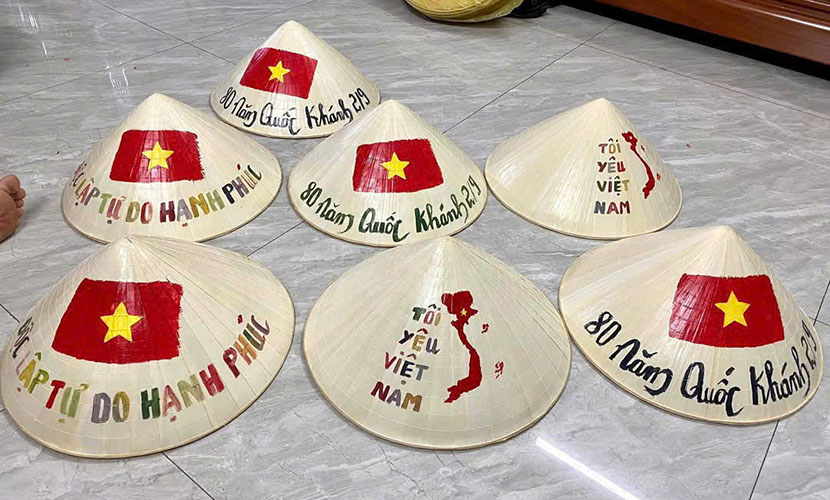
According to the Vietnam Handicraft Village Association, the export value of Vietnamese handicraft products grew at an average annual rate of 9.5% between 2015 and 2019. It increased from $1.62 billion in 2015 to $2.23 billion in 2019.
If existing limitations can be effectively addressed, Vietnam has the potential to raise export turnover in this sector to $4 billion by 2025. Positively, it can also aim for $6 billion by 2030.

Vietnamese handicraft products
Currently, Vietnamese handicraft products are available to 163 countries and territories. They account for nearly 10% of global market demand. Key export markets include the United States, Japan, the European countries, and several Middle Eastern countries. Notably, Vietnamese handicrafts are especially popular in many European countries.
Ms. Quyen, an expert, emphasized that 2025 poses several challenges for Vietnamese enterprises of handicraft exports. These include escalating tariff tensions among major economies that are directly impacting Vietnam’s exports.
Also, new regulations such as the ESPR (Ecodesign for sustainable products regulation), which requires sustainable supply chain certification, leading to higher compliance costs. Finally, it is persistently high international transportation costs.
To expand export positions, businesses must proactively obtain certifications such as FSC, BSCI, ISO 14001. Also, they should obtain circular material certifications to meet buyer requirements and mitigate legal risks.
They should also use recycled or certified plantation wood and adopt clean production technologies. Also, they should focus on innovative designs and furniture for small living spaces to keep up with global consumption trends.
In addition, they should participate in trade promotion programs to connect with major distributors and retailers. This is especially important through events in Europe.

Vietnamese bamboo handicrafts
Ms. Quynh, another expert, shared insights on the size and trends of the European market. Specifically, the European handicrafts market reached at around $293 billion in 2024. It is projected to grow impressively to $576 billion by 2033, with an annual growth rate of 7.41%.
In France alone, this market reached approximately $31.05 billion in 2024, with a growth rate of 8.3%. Additionally, the home decor segment in Europe is also a massive market. This reached $196 billion in 2024 and expected to hit $278 billion by 2033.
Current European consumption trends present advantages for Vietnamese handicraft products. Consumers increasingly prioritize unique, eco-friendly, and culturally rich Vietnam’s handmade products. Notably, Millennials account for up to 45% of the handicraft consumption market. Meanwhile, more than 70% of urban consumers express a preference for these items.
The demand for personalized and sustainable products, along with the rise of e-commerce, is reshaping the entire market. In fact, 73% of the value of home décor products in Europe comes from developing countries. Notably, the import value rose from EUR 2.2 billion in 2018 to EUR 3.0 billion in 2022.
In this context, Vietnamese craft enterprises are striving to seize these opportunities. The entire industry is targeting $4 billion in exports to European countries by 2025.
However, to successfully penetrate the market, Vietnamese businesses must strictly comply with EU standards. These standards include origin traceability, wood certification, environmental impact, and labor conditions. This market also demands frequent innovation in product designs, typically 2–3 times per year. This creates significant opportunities for diverse and creative products.

Vietnamese traditional hats
Ms. Phuong, a lawyer, emphasized the changes in the EU’s legal framework, have a direct impact on Vietnamese craft exporters. Most notably, the General Product Safety Regulation (GPSR) and the Product Liability Directive (PLD) require businesses to enhance responsibility for product safety and appoint a legal representative in the European countries when selling directly to the market.
She also discussed the diverse distribution channels businesses can tap into. They include contracts with importers complying with standards like GPSR and REACH, direct sales to retail chains, e-commerce platforms, participation in international trade fairs, or partnerships with interior designers and concept stores.
She also provided strategic recommendations, urging businesses to standardize Vietnamese handicraft products right from the design stage according to REACH requirements and meet CE labeling demands. Additionally, she advised combining trademark and industrial design protection to comprehensively safeguard their intellectual property.
Finally, she noted that Vietnamese businesses are facing fierce competition from large-scale, low-cost producers such as China and India. Moreover, fragmented production, small-scale operations, and weak branding remain persistent weaknesses of the sector.
Vietnamese source: https://trungtamwto.vn/hiep-dinh-khac/30532-day-manh-xuat-khau-hang-thu-cong-my-nghe-vao-chau-au
